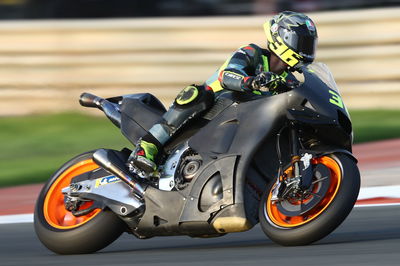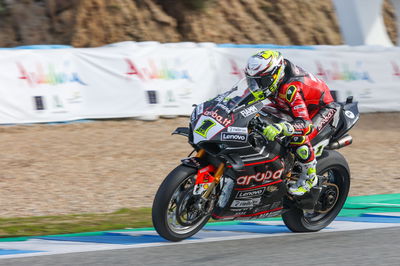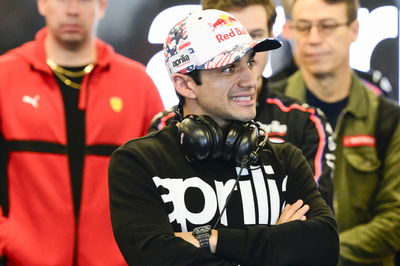No decrease in MotoGP speeds expected unless WorldSBK is affected

While gaps between MotoGP and WorldSBK machines have always had a tendency to fluctuate based on circuit lengths, bike development and the riders onboard said bikes, last week’s Portimao WorldSBK test showed that MotoGP has perhaps lost its clear advantage.
Four WorldSBK riders including world champion Alvaro Bautista, who topped the two-day test, broke the Portimao Superbike lap record, and while not a total surprise, it was how close they were to matching MotoGP times that was the most impressive part.
- Espargaro: ‘I’m a better guy than when I left KTM’, must avoid ‘stupid mistake’
- Sepang MotoGP Shakedown Test results - Day 3 (FINAL)
Bautista managed to put a short race stint together where he lapped within 1-to-2 tenths slower than Fabio Quartararo’s fastest in-race lap during last season’s Portuguese Grand Prix, while the Spaniard’s time attack run saw him finish three tenths down on Francesco Bagnaia’s MotoGP lap record.
Superbikes have incredible technology which has only got better over the last few years, however, given the cost difference between building both bikes, to lap within such small margins around a long lap is very impressive if we’re looking at it from a WorldSBK point of view.
In regards to MotoGP, improved aerodynamics in the form of winglets and holeshot devices - the front holeshot device has been banned in MotoGP for 2023 but not the rear device - have led to huge development gains, thus allowing MotoGP bikes to reach unimaginable speeds, which in-trun could and has already produced horrific-looking crashes.
And while a reduction in speed has been highlighted as something worth considering by many watching the sport, Dorna’s Director of Technology, Corrado Cecchinelli, told GPOne.com that no change will be made unless the same reduction in speed is applied to Superbike racing.
Cecchinelli said: "To limit the performance of MotoGP bikes we could decrease the engine capacity or simply decrease the bore even further. Obviously we should also intervene on the Superbike.

"The problem is also in the diversity of the mono-tyre chosen, because Pirelli is focusing a lot on development and this increases the performance of the production-derived bikes."
Cecchinelli also spoke about the challenge that comes with setting regulations as he believes engineers will always find ways to get around the obstacles in front of them.
"The problem with regulations is that no matter how much thought goes into them, they can be got around," added the Dorna official. "There are dozens of engineers who know how to do it… and of course, they do.
"In the current regulations, for example, the wings must be built with a certain stiffness, in order not to flex and stall. As you will recall it happened in F1 before the introduction of a specific norm.
"One of the effects of the lowering device is precisely to change the angle of the attack on the wings.
"Then of course, the load on the rear wheel increases which improves acceleration. These two effects combined allow for higher speeds, because in any motorsport competition speed on the straights is crucial."











